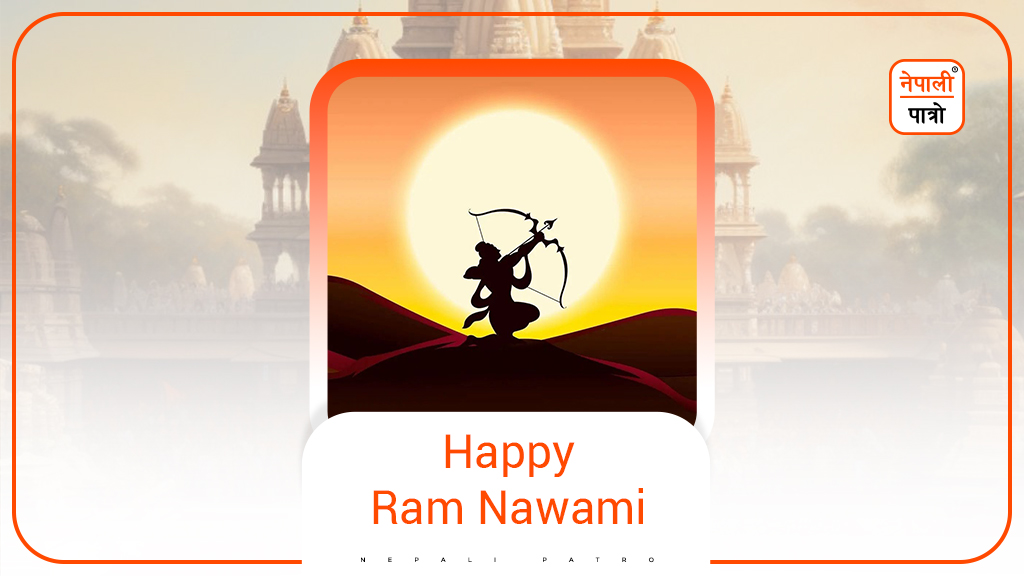
Ram Nawami
Goddess Sita with cheerful eyes as the new moon and lotus petal, seated on the left of Lord Ram in padmasana is praised, hymns are sung, in the devotion of Dasaratha Nandana (son of king Dashrath) Lord Shri Ramachandra, decorated with various ornaments along with Goddess Sita, adored during this festival.
ध्यायेदाजानुबाहुं धृतशरधनुषं बद्धपद्मासनस्थं।
पीतं वासोवसानं नवकमलदलस्पर्धिनेत्रं प्रसन्नम्।।
वामाङ्कारूढसीतामुखकमलमिलल्लोचनं नीरदाभं।
नानालङ्कारदीप्तं दधतमुरुजटामण्डलं रामचन्द्रम्।।
Rama Navami is an important festival of the Eastern Hindu Religion. This festival is celebrated on the ninth day of the Shukla Paksha during the month of Chaitra. According to the famous book Ramayana and the history-Purana, this day is also considered the birthday of Lord Shri Ramachandra. Since this festival comes within the Vasanti Navratri, on this day Lord Shri Ram and Adi Shakti Jagajjanai Durga Bhavani both are worshiped. In the memory of Lord Ram, born on Chaitra Shukla Navami at Ayodhya during the Treta Yug (Epoch/era) established a Ram Rajya (“Ram Rajya’ is a system where the society is run by principles of Lord Rama) after killing the Ravana with demonic tendencies.
During the Treta Yug, on the ninth day of Chaitra Shukla Paksha Lord Bishnu took birth in a human form, being the elder son of King Dashrath and Queen Kaushalya which was the seventh incarnation of Lord Bishnu. Blessed is the Raghu Kul (dynasty of Raghus) of the Treta era, who had the opportunity of bringing lord as Pure Bramha Parmatma Shrihari Kulbhushan to the human world. Shri Ram avatar, Lord Ram established a virtuous model as a dignified man. Along with studying, listening, remembering and meditating on the ideal character of God, a sacred sentiment flow arises in the human heart and the flickering human being becomes absorbed with devotion in Ram Bhakti.
Shri Ramachandra, is a mine of moral ideals and virtues in the Ramayana, he can be regarded as an ideal figure of truth, patience, forgiveness, kindness, gentleness, valor, peace, fearlessness, intelligent, enlightened, devout, maternal-paternal guardian, righteous, pious, guardians of monk, devoted, Guru devotee and sacramental guardian. Lord Shriram’s ideals and praises of Rama Rajya were equally popular and admired all over the world for ages.
The throne of the mighty empire Ayodhya remained without a successor for a long time which created confusion and anxiety everywhere. Although there were three queens, Chakravarty king of Ayodhya, Dasharatha’s lap was empty. Thus, the Kul Guru (Spiritual teacher of a Lineage) Maharshi of Raghukul Nandan King Dasaratha reached the refuge of Maharshi Vashishtha. At the behest of Gurudev, the Wringi sage was invited and the Putresthi Yagya ( fire ritual for son birth) sacrifice was performed. At the conclusion of the Yagya worship sacrifice, Agnidev (god Of fire) himself appeared and distributed khir (Rice pudding) as prasad (offering) to the queens. The three queens became pregnant after receiving divine offerings from the sage.
At that time, all the gods and sages were being molested by Lankas’ King Ravana’s atrocities. Ravana, grandson of Pulastya Rishi had married Mandaari, daughter of Mayasura. The good knower of all the Vedas, Ravana, Maniacal with strength and glory forcefully robbed his own elder Kuber looted the property of Lanka. After expelling Kuber from Lanka, Ravana became the Lankapati. Considering Sages, God, Brahmin, and Religion as his ultimate enemy, the tyranny of Ravana was becoming rampant. The jungles of the tenacity of all three realms were aghast. The laymen, the gods, and the planets likewise were like the prisoners of Ravana.
In such a situation all three queens of King Dasaratha became pregnant. Lord Shri Ram was born at noon during the day Chaitra Shuklapaksha Navami, from the womb of Queen Kaushalya. Whereas Kaikeyi gave birth to Bharat and from the womb of Sumitra, Lakshman and Shatrughan were born.
After the completion of the education of four Kumar at the ashram, a commune of Kul Guru (Spiritual teacher of a Lineage), Vashishta, Rishi Vishwamitra took Ram-Laxman to his tapovan to arrange the security of the Yagya (fire worship). Tadaka and Subahu who came to demolish the fire sacrifice were killed from God’s hand. Demon Marich fell down a hundred yards away when hit by Lord Ram. The sacrifice was seamlessly concluded without any problem.
Mithila Naresh Rajarshi (King of Mithila) Janak’s invitation was received at Tapovan itself. The swayambhar (act of selecting a groom by bride herself in a ceremony) of Janak Nandini (daughter of Janak) was organized. With Maharishi, both Avadh-Kumar Ram and Laxman arrived in Mithila. Mithila Naresh Rajarshi Janak announced Janaki (Sita) would select the groom who shall raise the bow of Shiva. When the valiant and mighty kings of the world were not able to perform the task, Rajarshi Janak was worried about not getting a suitable bride for his daughter. When Shiva’s bow was broken by Lord Rama, praise of Sriram began to prevail everywhere.
On this occasion, Parashuram arrives furious claiming this has been an insult to his aaradhya dev ( Patron god of a family). Lord Ram in order to calm Parsuram (sixth incarnation of Lord Vishnu) decided to destroy the power of Sri Parshuram and did so to calm him down. Even in the Swayamvar place, Lord Shri Ram maintains the dignity of his father. Ayodhya Naresh is invited and only after the permission of his father, Ram Janaki’s swayambhar takes place. The marriage of the four Ayodhyan princes’ (Ram, Bharat, Laksman, and Shatrughan) took place in Mithila.
Shriram’s popularity makes King Dasaratha very content. At the same time, King Dasaratha decides to retire from the throne by appointing Lord Ram as the king of Ayodhya. However, Lord Shriram was born to establish a Righteous religion. For this task, Devarshi Narad motivates maid Manthara to incite Queen Kaikeyi. By taking advantage of the king’s promise that he had promised as a weapon, Kaikeyi puts two terms before king Dashratha. Her first condition was that Shriram must exile to the forest for 14 years and the second condition was to anoint Bharat as a king in his place. The committed king was obliged to fulfill the word of Kaikeyi.
Shriram, obeying his father’s word, leaves the royal costume, and royal thrones and goes out to the forest-dwelling. Sita and Laxman also accompany Ram to the forest. King Dashrath passed away because of the malady of his sons’ absence. Meanwhile, Bharat, who was at his aunt’s house, sadly arrives at Chitrakoot to finish his father’s funeral and to reinstate Lord Shri Ram to the throne. Shriram persuades Bharat to return to Ayodhya to run the state. In the absence of Shriram, Bharat begins to rule the kingdom by placing Lord Ram’s “Kharau- a wooden sandal” on the throne.
During the forest-dwelling, Lord Shriram moves on with his wife Sita and brother Laxman. Various different places visit with ascetic sages. In different places, they encounter different ascetic sages. Sage Bhardwaj at Prayag, then Balmiki, Atri at ChitraKut, and arrive at Panchavati meeting sages as Sarbhanga, Sutichna, Agastya, and so on. They spent a few years at Panchavati after building a thatched hut. During their stay at Panchavati, they came to get acquainted with Giddharaj Jatayu (The Divine bird, king of the vultures, son of Aruna and Shyeni).
One day Ravana’s sister Surpanakha arrives at Panchavati. Lord Shri Ram, cuts off crazy Surpanakha’s nose, not being able to bear her aggressiveness combined with extreme lust. She invokes a demon named Khar, Dushan. When God Ram defeated thousands of soldiers of Khar, Dusan, she reached out to her brother, Ravana. Lanka king Ravana devises a strategy to deceive Sita and to take her away to his kingdom. Marich (Maricha, or Mareecha (Sanskrit: मारीच, Mārīca) taking the form of a golden deer assists Ravana to kidnap Sita. Sita, seeing a golden antelope, becomes very fond of it and urges her husband Ram to bring it to her. Marich’s elusive scream scares Sita and she asks Laxman to go for Shriram’s help.
Laxman urges Sita to stay safe within the Laxman Rekha (a line made by his arrow using special protective chants) and not to cross it went towards the direction from where the voice came. At this point deceiving Sita Ravana kidnaps her, and in his Pushpak Biman (modern-day airplane) takes her to Ashok Batika ( a garden called Ashoka) in Lanka.
Jatayu, the witness of Sita’s abduction, is found injured and near death. After Jatayu’s death, Sriram performs Jatayu’s funeral. After killing Kabandhasur and going to Shabari’s ashram, he eats berries already tasted by her, as per her advice Sri Ram meets Hanuman and Sugriva. In the Kishkinda state, exiled by the oppressive King Bali, his Brother Sugriva, receives God’s refuge. Lord ram told Sugriv to urge Bali to a battle and the oppressive Bali is killed by lord Ram. Sugriva is then crowned as King of the kingdom of Kishinda and during the entire monsoon season Ram with his brother Laxman waits in the mount Risyamuk.
After the monsoon, on the month of Asoj (September-October), Hanuman with Sugriva and the entire Banarsena (hanumans troops consisting of half human and half monkey form) go southbound to search Sita. The bear (Jambant) and other remaining banarsena (monkey troops) in search of Goddess Sita scattered around all directions. Hanuman crosses a hundred yojanas (1 yojan = 12 kmtrs) of the ocean and finds Janakandini Sita and returns after burning Lanka. A bridge is made over the ocean. Lord ram and his allies cross the one hundred yojanas long bridge and reach Lanka. A great war occurs and after the eradication of all the heretics, including Ravana, the 14 years Jungle abolition period of Rama also ends.
Responding to Sriram’s dignity before returning from Lanka, Jagajanani Sita prepared for a fire test. Bibhisans coronation takes place in Lanka, and Sriram, Sita, Laxman, and Hanuman along with the monkey forces return to Ayodhya aboard the Pushpak plane.
After returning to Ayodhya, Shriram ruled it for a thousand years and is described in the context of the Ramayana. There are a lot of talks about Ram Rajya to date. The name of Lord Shriram is still used and widely known worldwide. Whether it be in awe or a calamity, It is our culture to pronounce Lord Shriram automatically as well as immediately.
Many compositions, epics, etc. are associated with the blessed character and praise of Lord Shriram. Valmiki Ramayana written in Sanskrit, Yog Vashishta, and various Puranas of Sanskrit, the ideal characterization of Shriram is found. Ramcharitmanas a Hindi composition by Tulsidas and Bhanubhakta’s precious work Ramayana in Nepali is also a unique rendition of Lord Rama’s story. For the devotion of God, reading of Ramayana is a great and famous tradition to date. Apart from this, Balun (Religious Songs/ hymns accompanied by dances), Ram Katha (storytelling), Ramlila (theatrical), etc. are also presented in various folk cultures.
Rama Rajya is the fullness of good governance, order, religion, peace, justice and virtue. Even today, in countries of Eastern civilization, a country with a good rule is called Ram Rajya. Shriram’s paternal devotion, Obedience to parents, Brotherly love, one-wife devotion, gratitude, and state governance as desired by his people, and personal qualities as such are well established as an Ideal character.
Ram Nawami is not only the birth anniversary of Lord Shriram but also the day to commemorate the celebration and joy of the defeat of lawlessness and the establishment of religion on the whole earth. History, mythology, and scriptures have directed the incarnation of the Day of God for human welfare as a day of celebration. Therefore, on this holy day, special worship of God, fasting rituals, special worship and storytelling should be performed. The message of today’s festival is also to defeat the Ravana in the form of sin present in every person and establish a Ram rajya within every living soul. To Read this article in the Nepali Language please click here.
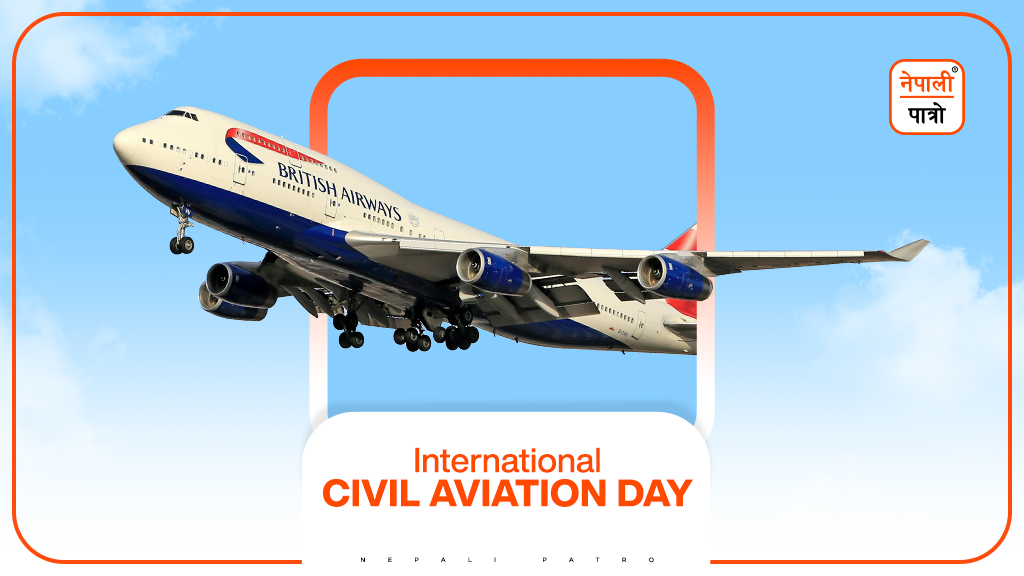
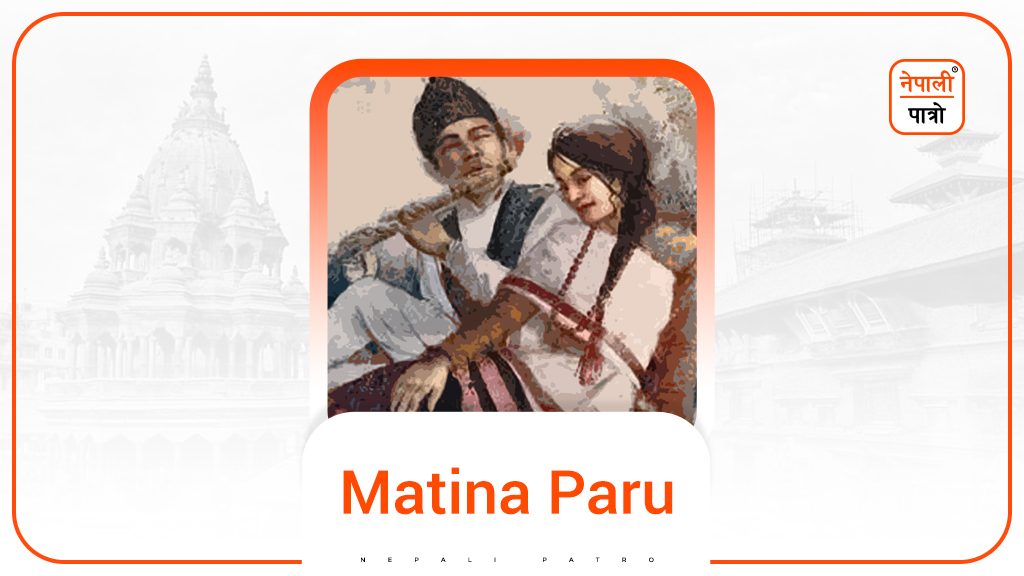
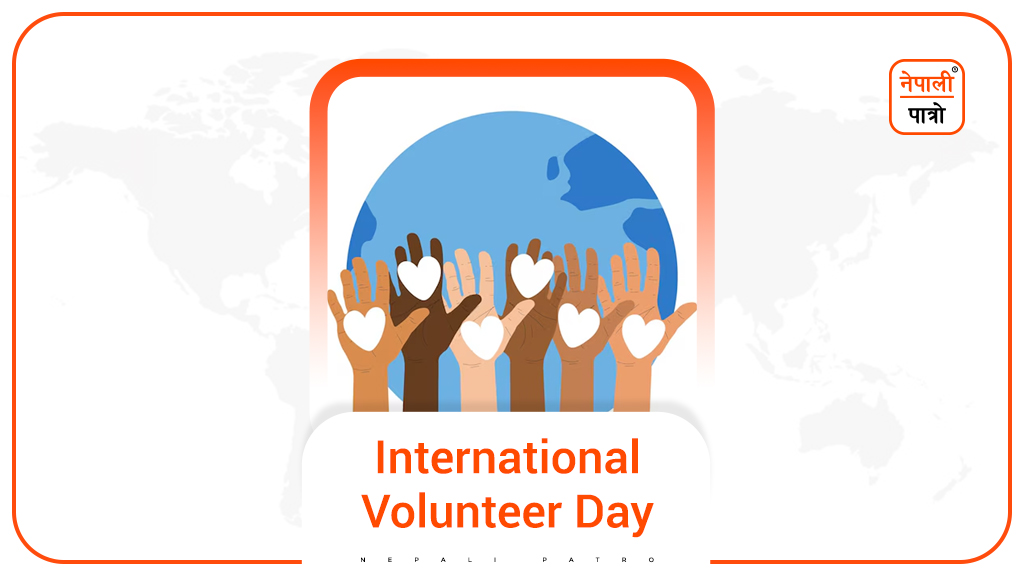

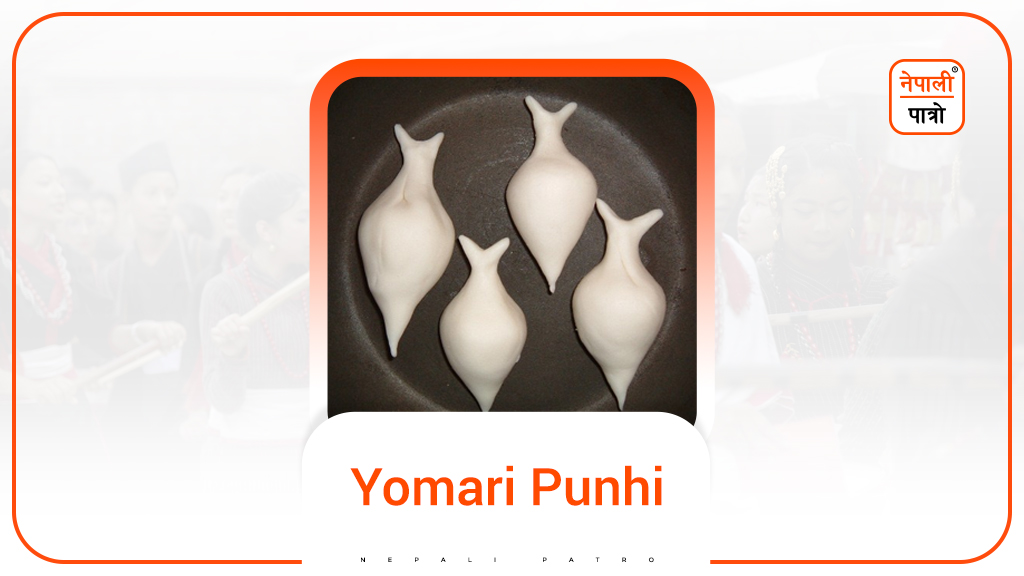
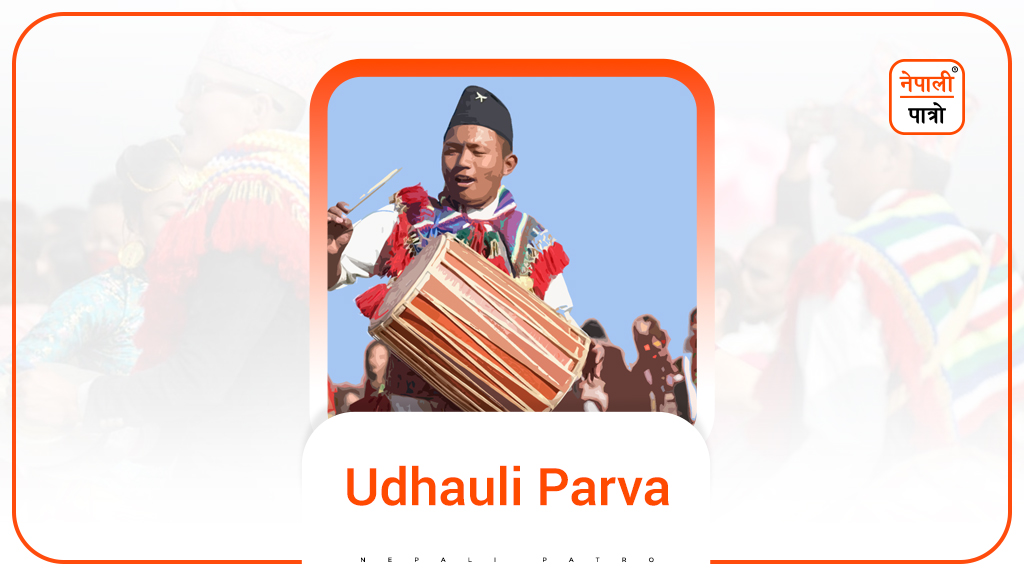
March 29, 2023 3 years
jay Shree ram
April 17, 2024 2 years
happy ram naumi